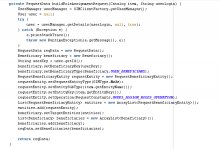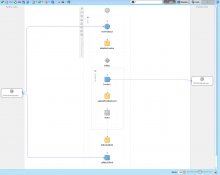Information Lifecycle Management resume

Introduction
OIM 11g R2 being such a comprehensive provisioning solution, it provides API’s for almost every aspect of functionality available in the product. This makes it a little difficult to decide which examples are needed the most in the documentation. Fortunately, the documentation does supply samples that can definitely serve as a foundation for more complex pieces of code. Some of the API’s I found developers using more often than others are the ones related to the operations associated with users’ requests for resources. Amongst those the following API’s are mostly required:
- Request Creation/Submission
- Request History Data Access
- Child Table Data Manipulation
- Approval Information Data Access
The Use Case
As a starting point for this article, I figured that the best way to describe a series of API code samples is by using a use case. Here is ours:
A Home Building Company requires their Engineers and Site Managers to carry handheld devices (Smart Phones, Tablets, Radios) to keep information about their projects and also maintain communication with the corporate office. These devices are provisioned to their users along with a specific list of services enabled on the device. The users are provisioned these resources through the following process:
When the user is on boarded, it gets assigned to an Organization according to their role (Engineer, Architect, Site Manager, Designer, Sales Associate, etc). Depending on the organization the users belong to a certain type of device with specific capabilities can be requested. Users submit their requests for a device and a set of capabilities through OIM. Now, the request for provisioning of the resource is not supposed to reach the administrator that will setup the contract for the device until all the individual services that will be enabled in the contract are approved. The fact that a device service is requested doesn’t mean it will be granted to the requester. Each individual service requires a different set of approvals. Once all the requested services have been processed (approved or denied) then the request arrives in the administrator’s queue.
Each individual service requires a different set of approvals. Once all the requested services have been processed (approved or denied) then the request arrives in the administrator’s queue.
The Design
According to the Use Case described previously, the design of a solution that addresses the requirements needs to leverage the concept of Disconnected Application Instance. In this case in particular, the Disconnected Application Instance will have a Child Form used to store the Services that will be enabled on the device’s contract once it is provisioned.
As described above, the services go through approval individually. In order to accomplish this in a simple way we will represent the device contract services as roles, which can be assigned their own approval process and can be tracked individually. Now, suppose the HBC has a new requirement that expresses the need to provision application entitlements to a Portal that allows users to manage their own contract’s services and the access is controlled through AD group membership. Having the design already described allows for the use of access policies to provision such access automatically once the role for the individual service is approved, and the evaluation of access policies has been executed.
In summary, the code samples we provide in this section will focus on how to create the requests for the disconnected application instances and the roles representing the services available on the contract for the device. Then, the focus will be shifted to the API’s used to retrieve the data for a given request and read it. The user interface that allows the users to request such devices and services can be implemented as a customization to the catalog screens in OIM 11g R2. The screens will contain a drop down list of devices that are available to the users according to their organization. When a device is selected, a second catalog search will bring back the services that are tied to the selected device (For an example of cascading searches customization please refer to the following blog post ).The Implementation
Now to the fun part, how do we make this happen? As I stated before, the main focus will be the Request Lifecycle Management API’s so we will not show the Catalog Search API’s samples neither how to customize the UI to input the data (a potential implementation of such logic is also discussed in the post mentioned earlier. Also, for all kinds of samples of UI customizations and other commonly used OIM API’s make sure to refer to the OIM 11g Academy). So assuming the user has the means to select a device and a set of services for the selected device the requests for each one will be created as follows:Provider of apostilling. Apostille services. New York apostille. Apostille documents.
You might also like


三维设计拐点来临-记2014Bentley电力行业研 — 赛迪网
Bentley 应势推出了自己的资产信息全生命周期管理(Asset Lifecycle Information Management,ALIM)解决方案。不但如此,Bentley 还在近年推出了“中国唯一”和“中国优先”策略,专门成立了一个多达30人的团队,专门针对 ..




